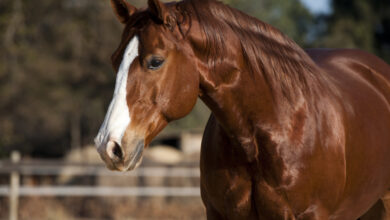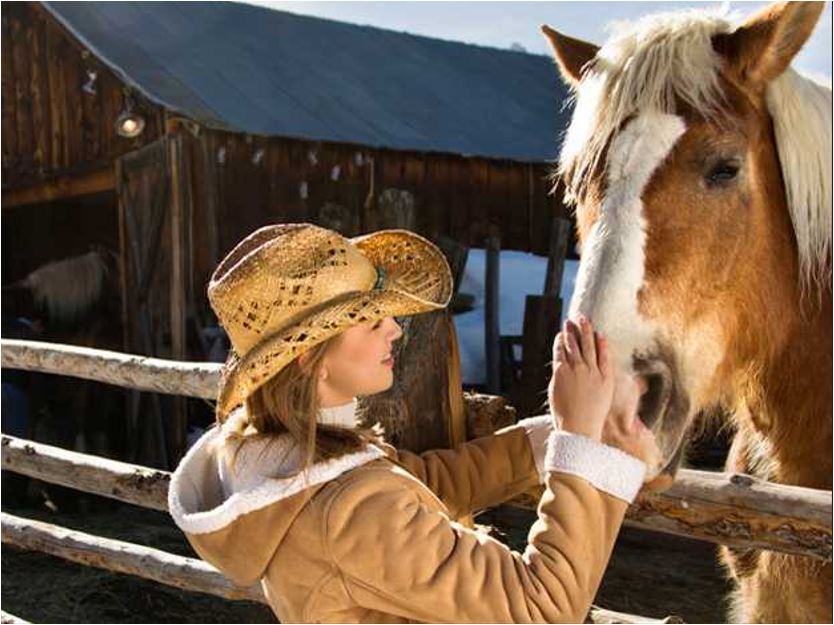
by Al Badia
It is a good practice always to tie a horse above the height of its withers, with 2 to 2-1/2 feet of tie rope between the knot and the halter. It is important to keep the horse from dropping its head down and stepping over the rope.
First, determine how much tie rope you will need by measuring from your hand (the handhold) up to the horse’s withers. If you go past your own height, no problem–just shorten it later.
Next to the halter, make a loop in your tie rope about an inch in diameter by folding it over once or twice. Bring this through itself and pull tight. Then bring it around under the base of your handhold loop, making sure there are no twists or kinks in it. Bring it back up through itself again so that both ends are in front of you (with no twists). Take one end over and behind itself (like tying shoelaces); then take both ends together and tie them off at what will be your handhold location on top of your looped base knot. Make sure this knot is tight!
Tying a horse can be a little intimidating, but once you have the right tools and know a few key details, it’s not so bad.
Here are some tips to help you get started:
- It is a good practice always to tie a horse above the height of its withers, with 2 to 2-1/2 feet of tie rope between the knot and the halter. It is important to keep the horse from dropping its head down and stepping over the rope.
- Never tie a halter directly under its throatlatch—the horse may swallow the tie rope if it is tied too tightly and choke itself. Instead, wrap it around one or two times before tying it off at the bottom of its throatlatch (which should be about where your hand meets your arm when you cup your palm).
- If you’re tying an animal that’s wearing blinders or blinkers (a piece of plastic or metal that covers its eyes), make sure they’re on straight before attempting to tie them up—if they’re not on straight, they could rub against their eye causing injury or discomfort which could lead them to panic which could cause injury or death!




